The Three Swings of Wright Balance®
Copyright, Wright Balance® 2024
“It is a sign of great inner insecurity to be hostile to the unfamiliar.” Anaïs Nin
"Experience is the Measurement of Truth"
Our 30 years of research has yielded the following. In summary we are able to do a simple isometric exercise and provide a student with the ability to recruit different “Core Zones”, with predictable changes in heel to toe balance, matching Posture, Grip and Sequencing of Motion. These matching set up characteristics produce maximum Power and Consistency.
Each Person has a unique angle of their body that repeats throughout the swing when they are in balance. This angle is set at address from posture through grip. This personal angle is the angle of range of motion for each of us. When this angle is not set, we have a restriction of motion that creates imbalance and compromises power.
There are multiple ways to swing a Golf Club. These Swings come out of 1 of our 3 Core Zones. The Carrying Angle changes by Core Zone and by each of the 5 Core Zone subregions.
The following is an illustration of the 3 Core Zones and the 5 Core subregions within each Zone.
THE POSTERIOR Zone / LOWER CORE PLAYER
The Lower Core, subregions 1 through 5, entails the area from the Navel to the Pelvic Floor. Players in this Core Zone have the widest Stance Width of all Players.
Balance is over Center of Arches
The Lower Core Player also has the greatest Carrying Angle. The large Carrying Angle creates the ability for the player to place their trail elbow inside their trail hip in the downswing.
If the trail elbow does not reach inside the hip in the downswing, doing the Wright Balance® Express in the appropriate subregion will increase the Carrying Angle and allow the player to place the trail elbow in in front of the trail hip. This process of changing the Carrying Angle is as recent as the fall of 2023.
Carrying Angle changes can be accomplished in players doing the Wright Balance® Express finishing on the 1 of 5 subregion Stance Widths that creates their best carrying angle for the most efficient delivery and use of the ground.
Lower Core Players are body swingers. They have the strongest grip, the greatest shaft lean, and the greatest trail shoulder tilt at address. When we measure the Posture Angles of the Lower Core Player, their Spine Angle and Thigh Angles are equal. Their Spine and Thigh Angles are 148 degrees or less when measured 90 degrees to the ground and in a Lower Core Stance Width. Their ball position is center to center-back to accommodate the greater shaft lean. The butt of the club of the Lower Core Player will point toward the target side thigh.
The Lower Core Player has a short thumb due to gripping the club so that the bottom of the grip crosses the second pad up on the middle finger of both the left and right hands.


This grip is “deep in the fingers”. That "deep in the fingers" grip produces the greatest shaft lean and stronger grip when compared to the Upper and Middle Core Zones. Shaft lean is a natural position produced by the grip as shown below in Dustin Johnson at Address...
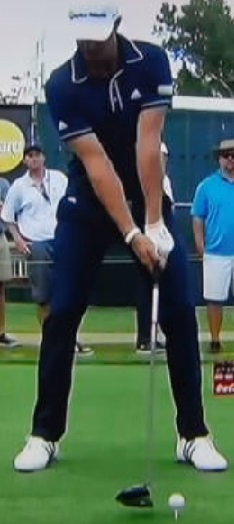
...and Paula Creamer

A down the line view of the Lower Core Player shows the trail arm is "under" the target side arm at address. Grip strength in both the right and left hands produces this setup position.
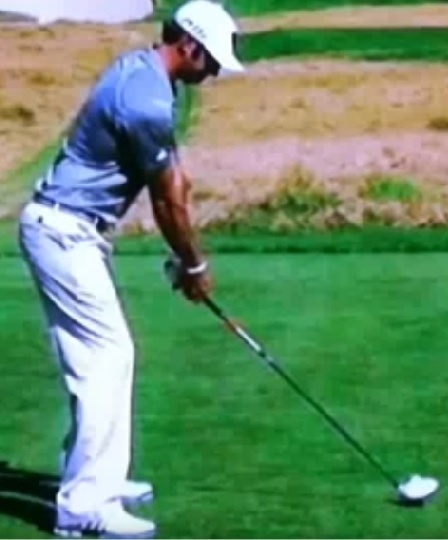

Also note that the thigh angle and spine angle are identical in the Lower Core Player. This angle is 148 degrees or greater (below 148 to lower 140s) in Lower Core Players.
The Lower Core Player starts the sequencing of the backswing with their Upper Core as the Shoulders arms and hands turn as one unit.


Their trail hip turn is the least of the 3 Core Zones and the target side knee points to the front of the ball. The Wider Stance Width facilitates a restriction of the hips in the backswing. The Lower Core Player also has the greatest separation of the Upper and Lower Body in their backswing.

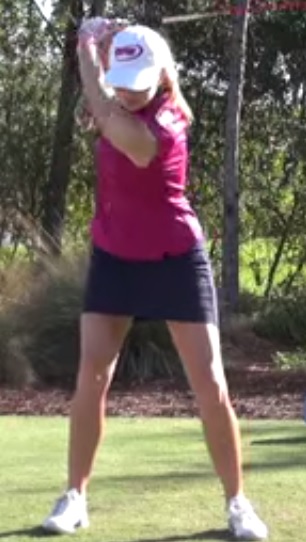
The plane of their shoulders approximates level at the top of their backswing and / or they sit down and level their shoulders before starting the club down, similar to Dustin Johnson and Jordan Spieth. Their Center of Mass is over their trail hip at the top of their backswing and their trail hand is “Under” with the forearm of that trail arm perpendicular to the ground.
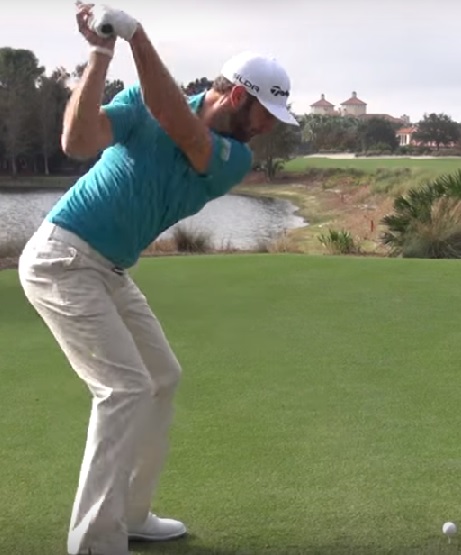
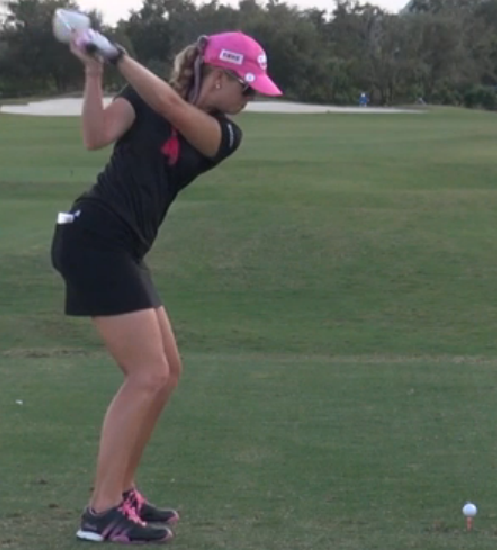
In the downswing, the Lower Core Player's kinematic sequence begins with a rotation of their hips and then their shoulders, arms and hands follow, just the opposite of the backswing sequence. The trail elbow is seated inside the trail hip in the downswing and the shaft plane crosses the trail arm and drops further as the butt of the club points at the Lower Core at impact. The hips are 75 to 90 percent cleared at impact and the delivery to the ball is under with an extension of the clubhead down the target line.
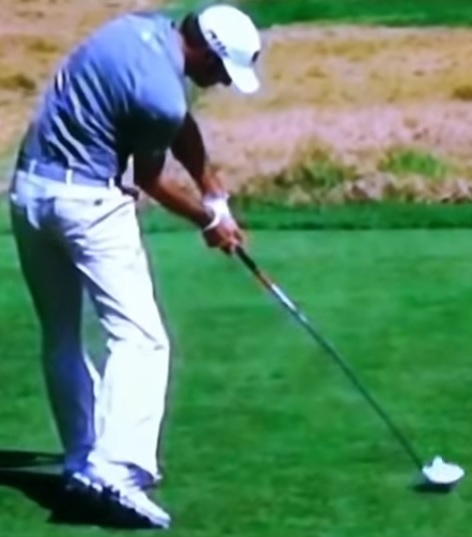
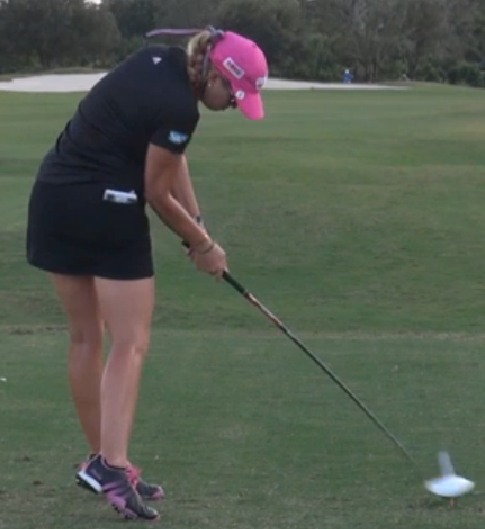
The Lower Core Player’s balance is over the center of their arches at address and through the swing. This is an important point we will revisit. Again, note that the Lower Core Player’s balance is over the Center of their Arches. The Lower Core Player gets their Power from the ground using Linear (Horizontal) and Torque (Rotational) Ground Force with minimal to no Vertical Forces through their swing.

Ben Hogan is the Poster Person of the Lower Core Player. His swing was the model for many teachers for decades, myself included. And why not? A player of Hogan’s caliber should be emulated, but maybe not. Read on and you begin to see how unique each of us is. In this illustration, Hogan is demonstrating the position of the trail arm in the downswing. Notice the under position of his trail hand and the seating of his trail elbow inside his trail hip,

Ben Hogan demonstrating trail arm position in the downswing
The delivery of the club to the ball in the Lower Core Player is "Under"...
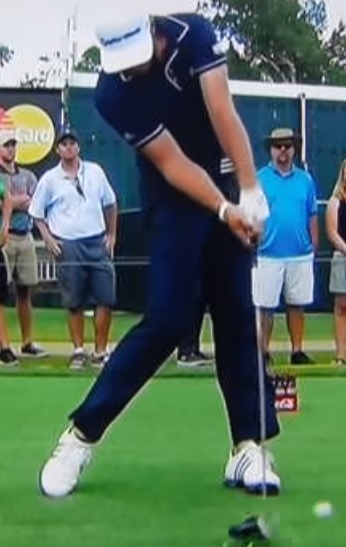
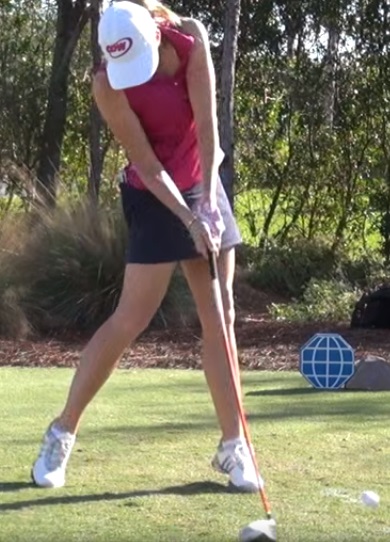
...with extension down the line.

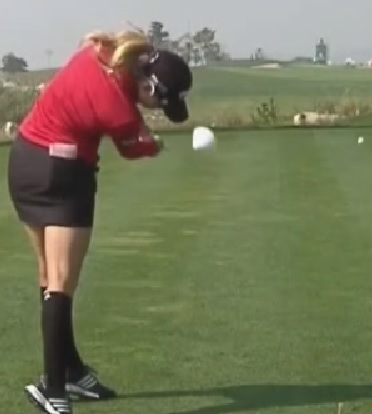
Ground Use for Power
Wright Balance® Professional, Neurologist Robert Giombetti, MD showed that the the Lower Core Player uses the ground linearly and rotationally. This observation was made during a research project by Dr. Giombetti using a Swing Catalyst and presented at multiple conferences.
Lower Core Tour Players include Dustin Johnson, Jordan Spieth and Paula Creamer. In spite of the proliferation of Hogan’s model, Lower Core Players are rare in men. I am a Lower Core Player. My legs and glutes were always the strongest part of my body and still test the strongest to this day. Lower Core Players are more often found in women players due to the fact that the greatest lean muscle mass in women is in the Middle and Lower Core.
Men, as a rule, have greater lean muscle mass in their Upper Core. Our research shows that the Lower Core Male is a rare breed, approximately 10% of players in the US.
Wright Balance® professional, who teaches in Stuttgart, Germany describes a preponderance of Lower Core players he teaches. He suggests that this is due to the focus on soccer and snow skiing creating a stronger lower body.
THE Anterior Zone / UPPER CORE PLAYER
Anterior Zone / Upper Core (RED)
Balance is on the Balls of the feet
The Anterior Zone (Upper Core), includes the base of the Sternum to the Neck. Players in this Region have the Narrowest Stance Widths, the least amount of shaft lean and a forward ball position. The Upper Core Player’s shaft lean is just inside the interior groin of the target side leg, closer to their midline than their target side thigh as shown in Patrick Reed in the following illustration.

When you look down the line at address the trail arm appears above the target side arm at address as shown here. Even with this camera angle you can see that Reed's trail arm is above his target side arm. This is true in "most" Upper Core players as a result of the weak right and left hand grip.

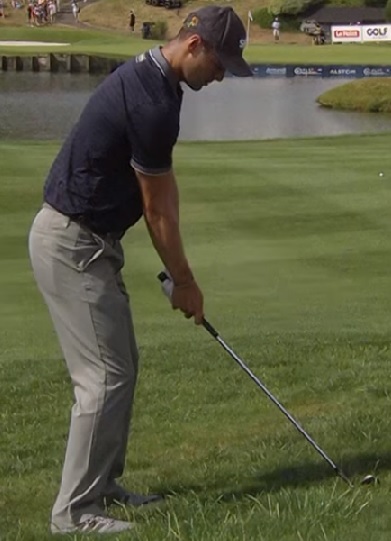
The Upper Core Player has long left & right thumbs due to gripping the club so that the grip crosses the first pad up next to the palm on the middle finger of both the left and right hands.
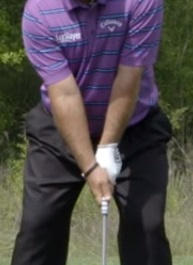
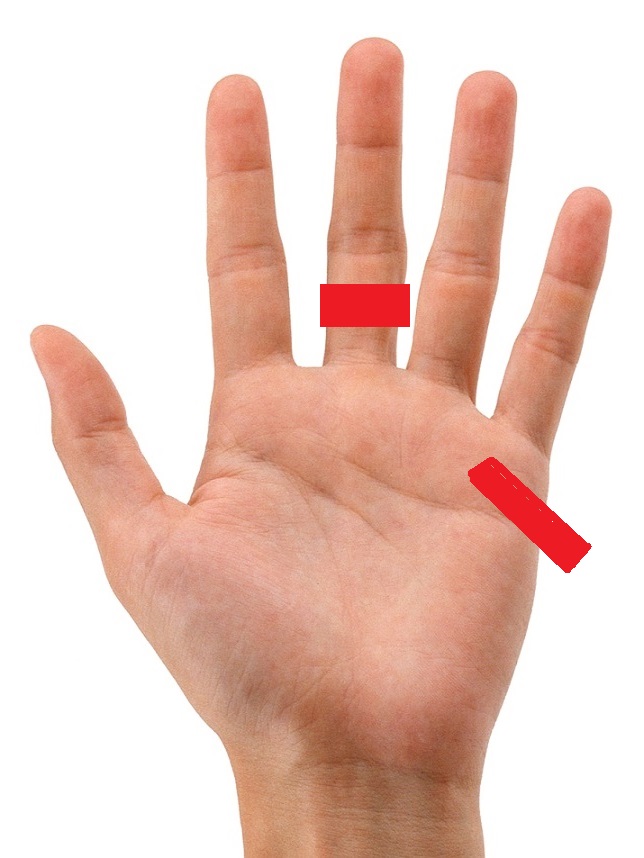

This grip position is what produces the minimal shaft lean and weaker grip. Shaft lean is a natural position produced by the grip.
The Upper Core Player's trail arm will only “seat” at the side of the rib cage on or behind the trail hip. Their trail elbow is outside the trail hip on their side in the downswing. Upper Core Players are arms and hands swingers. Their weak grip produces the least shaft lean and the least trail shoulder tilt at address of all the players.
When we measure the Posture Angles of the Upper Core Player, their Spine Angle is much greater than their thigh angle when in an Upper Core Stance Width.
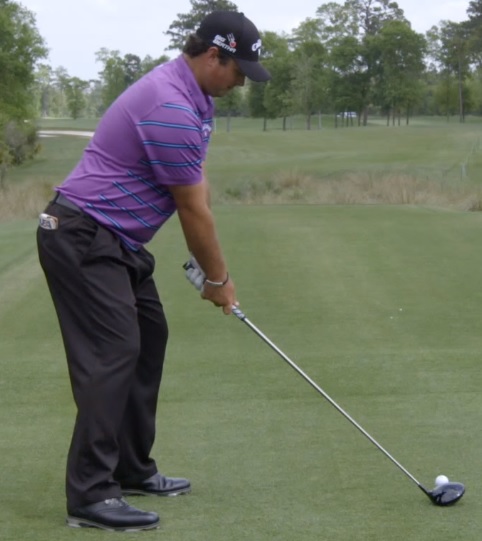
The thigh angle measures 162 degrees or greater at address. The Upper Core Player starts the sequencing of their backswing with their Lower body (trail hip).
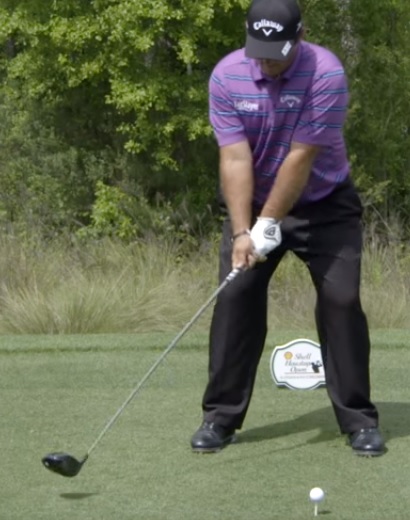
Their trail hip turn is deep and the target side knee points well inside the back of the ball. The Upper Core Player has the greatest hip turn and the least separation of the Upper and Lower Body at the top of their swing and the plane of their shoulders is vertical. Upper Core Player Patrick Reed is shown below at the top of his swing.
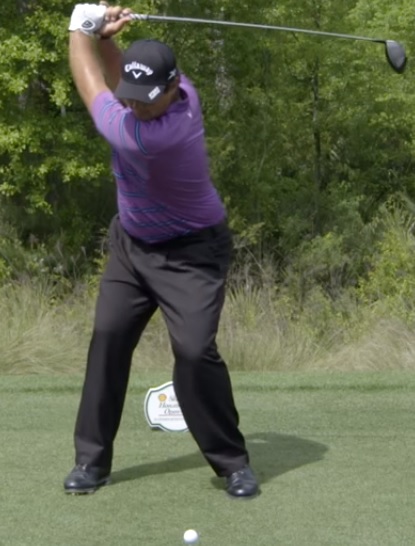
Their Center of Mass is over their target side at the top of their backswing and their trail hand is on top of the grip with the forearm of that trail arm “flying”, two things I attempted to “fix” in too many players in my early days of teaching. When I would see that Upper Core Player with their Center of mass on the target side, I believed that was a “reverse pivot” and the “flying” trail elbow I believed needed to be inside that target side hip, just like Mr. Hogan. Why not? That worked for Mr. Hogan and for me. Why not everybody else? Fortunately the great Upper Core Players did what was “natural” for them. They use terms like covering the ball and release of the arms and hands.

This is a Photo illustration of PGA Tour Player Kevin Stadler during a lesson in 2014 prior to his hand injury. Note his right elbow position at the top of his swing.
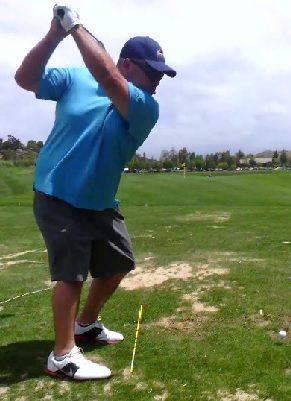
In the downswing, the Upper Core Player is already target side. They begin with a rotation of their shoulders and hips. Many Upper Core Players will describe a feeling of an “over the top” swing as they begin to work on their new motion.


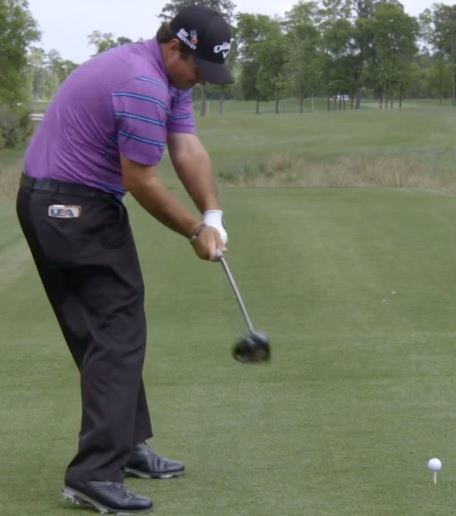
The trail elbow is “outside” the trail hip in the downswing.
As the hips reach parallel to the target line in the downswing, there is a change of direction vertically. The Upper Core player often comes out of posture rising through impact as shown in these photos of Upper Core Players Kevin Stadler and Patrick Reed.

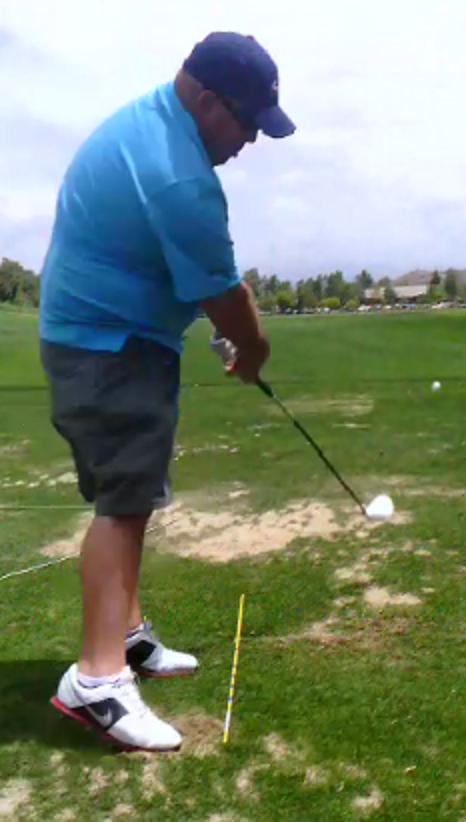

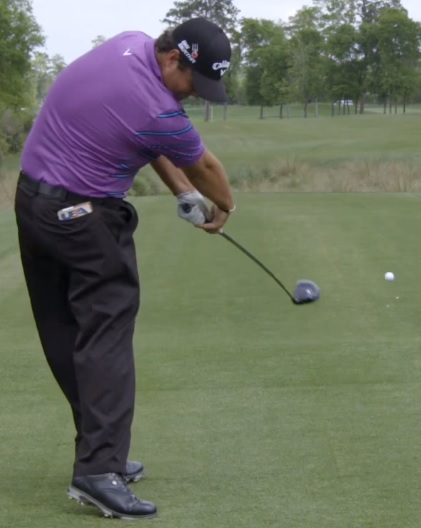
Here is Wright Balance Professional Larry Rinker in 1982 while playing on the PGA Tour. Larry shot 62 on this day.
Notice Larry's release of the club before his hips clear and his vertical use of the ground in his swing. He looks very similar to Kevin Stadler's and Patrick Reed's impact positions.
The hips have minimal clearance at impact due to the direction change upward. This direction change is directly related to their balance being on the balls of their feet. The arms and hands lead and exit quickly left in the release of the club. The club points at the Upper Core at impact. Rising through impact is a must for the Upper Core Player. If you tell an Upper Core Player to stay in their Posture through impact, you will see an immediate Power leak.
The Upper Core Player’s balance is over the balls of their feet at address and through the swing. This is an important point we will revisit. Again, note that the Upper Core Player’s balance is over the balls of their feet.

The Upper Core Player gets their Power from the ground using Torque (Rotational) and Vertical Ground Force. The Upper Core player has very little if any Linear / Horizontal motion in their golf swing as they load to their target side with a big trail hip turn, elbow out and on top position at the top of their backswing as shown here with Colin Montgomerie.
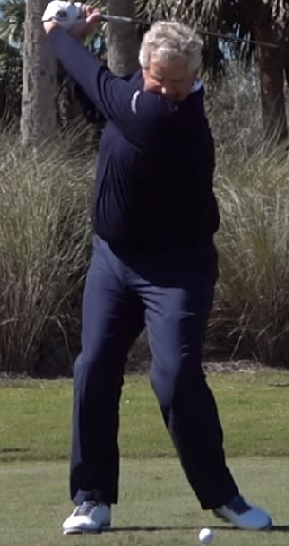
Current Upper Core Tour Players include Patrick Reed, Martin Kaymer, Phil Mickleson and a significant percentage of those playing the PGA Tour now. The only Upper Core Women’s Tour Player I have seen is Laura Davies. Upper Core Tour Players are rare in women.
These photos of Laura Davies at and just past impact show the characteristics of an Upper Core swing in a great LPGA Tour Player. Note where the club shaft points and Laura rising through impact in the first photo.
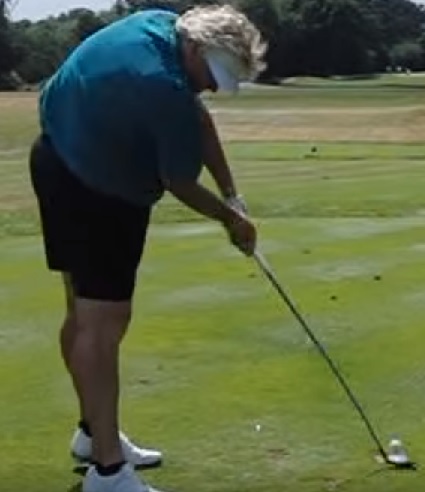
In this next photo notice Laura's lack of hip clearance and the club exiting quickly left.

THE INTERIOR ZONE / MIDDLE CORE PLAYER
That leaves us with the Interior Zone / Middle Core Player. The Middle Core Player is the Hybrid, They have characteristics of the Upper and Lower Core Player. They have the “Gold Standard” Swing. The Middle Core entails the area from the Navel to the base of the sternum.
Interior Zone / Middle Core (Black)
Balance is behind the Balls of the feet & Forward of the Center of the Arches
Players in this Region have a stance width in between the Upper and Lower Core Players.

The Interior Zone (Middle Core) players don't have the ability to place their trail arm inside their hip in the downswing. Their carrying / Power Angle ranges from 152 to 157 when measured. Their trail arm elbow is on the trail hip as they deliver the clubhead to the ball. Middle Core Players are both body swingers and arms and hands swingers.
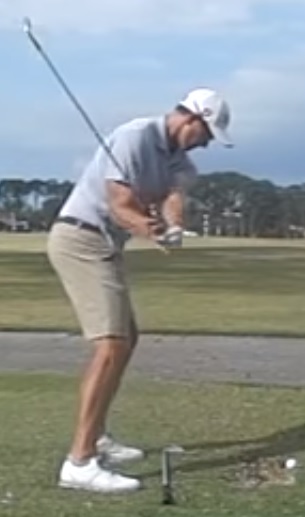
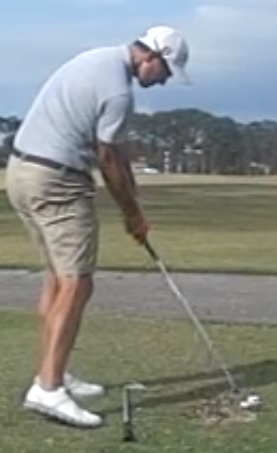
The Middle Core Player has a “neutral” grip with the bottom of the grip crossing the first knuckle joint of the middle fingers of the Left and Right Hands.

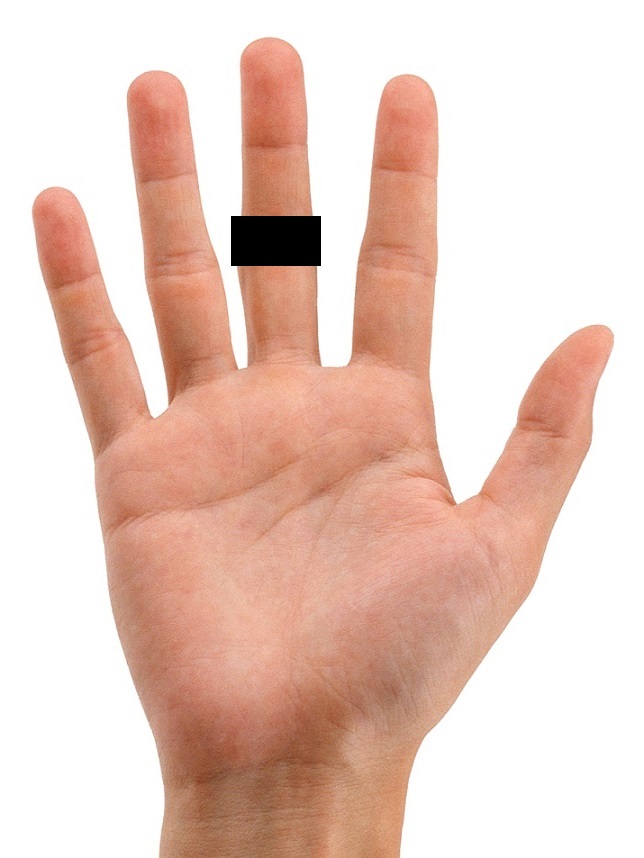
This grip position produces a neutral grip and their shaft lean is between the Upper and Lower Core Player, as is their stance width.
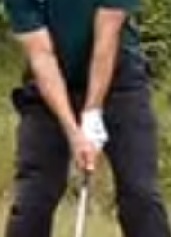
This Photo is Middle Core Player Ernie Els, Note his neutral grip.

When we measure the Posture Angles of the Middle Core Player, their Spine Angle is slightly greater than their Thigh Angle. Their thigh Angle measures between 152 and 157 degrees, generally in the 154 to 156 range. Middle Core Player Adam Scott's Posture...
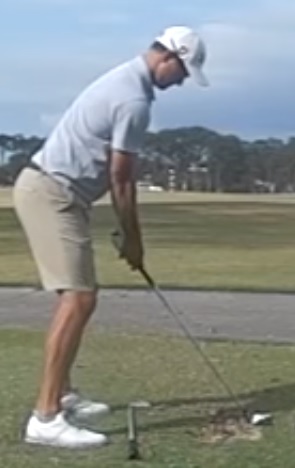
...and Ernie Els' below are characteristic of the Middle Core Player.

Again, the Middle Core Player's trail arm seats just at the trail hip in the downswing as shown here with Ernie Els. Note that the shaft bisects Ernie's Middle Core in the downswing as you saw with Adam Scott...
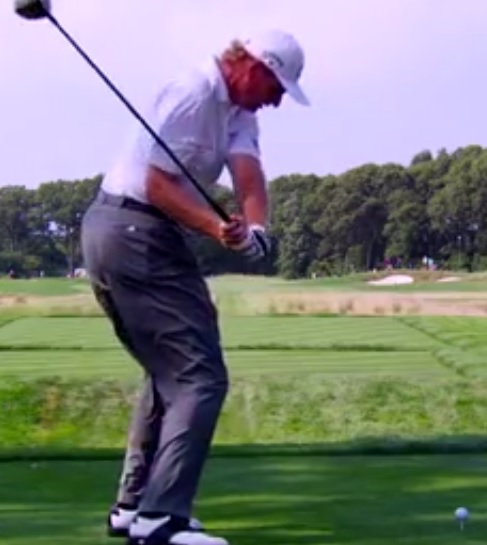
...and the butt of the club points at his Middle Core at impact, also as you saw with Adam Scott.
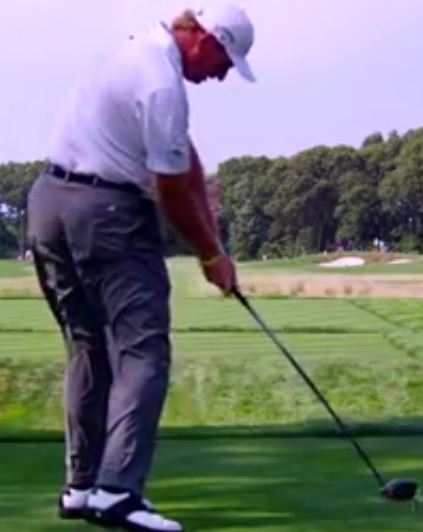
The Middle Core Player starts the sequencing of the backswing with "everything together". That means that the Upper and Lower Core move in the backswing at the same time. The Shoulders, arms, hands and hips begin the backswing as one unit.
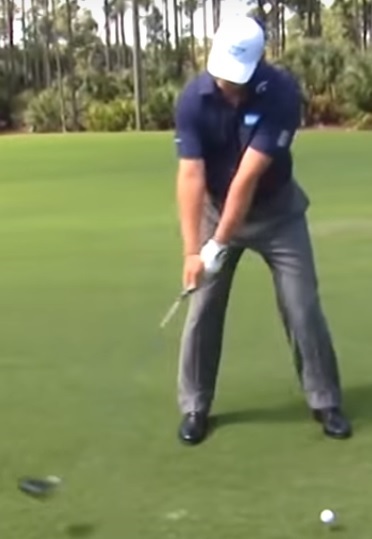
Their hip turn is greater than the Lower Core but less than the upper Core. Their target side knee points at the ball.
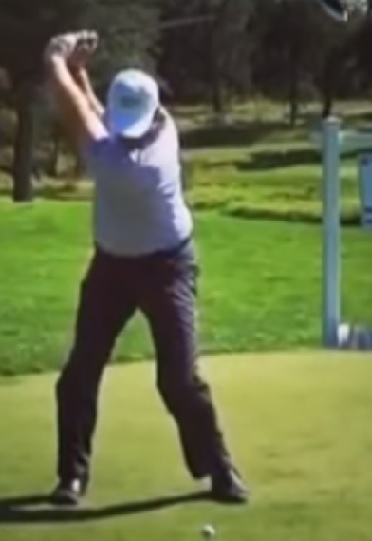
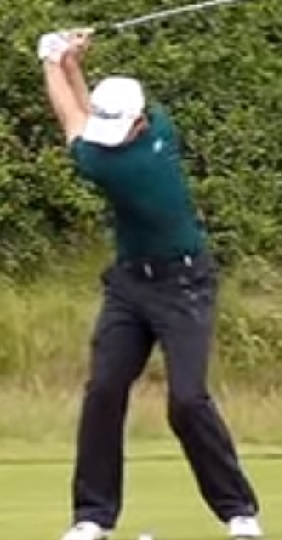
The Middle Core Player has separation of the Upper and Lower Body between the Lower and Upper Core in their backswing. The plane of their shoulders is “neutral” at the top of their backswing. Their Center of Mass is centered over the Pelvis at the top of their swing.
The Middle Core Player's trail hand is on the side of the grip at the top of the swing and their trail forearm is perpendicular to slightly “out” relative to the ground.
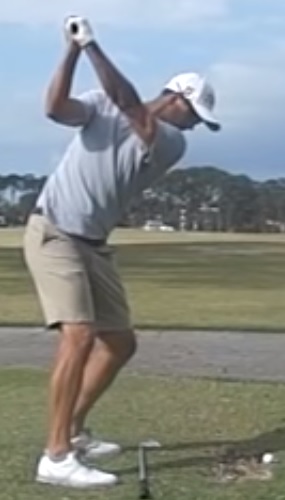

The downswing shaft plane crosses the Middle Core and the butt of the club points at the Middle Core at impact. The trail elbow is seated at the trail hip in the downswing. The hips are around 45 percent cleared at impact and the delivery to the ball with the trail hand is on the side with a release 45 degrees (diagonally) to the target line.

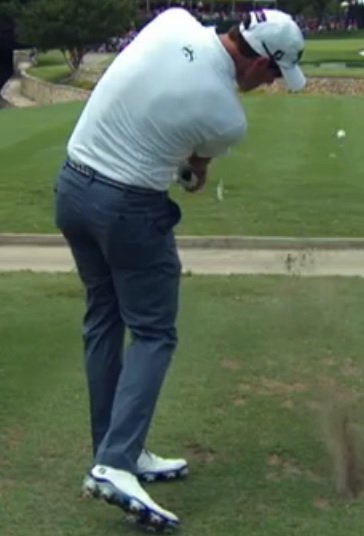
The Middle Core Player’s balance is just forward of the center of the arches and behind the balls of the feet at address and through the swing. This is an important point we will revisit. The Middle Core Player gets their Power from the ground using Linear (Horizontal), Torque (Rotational) and Vertical Ground Force, all 3 Power Sources.
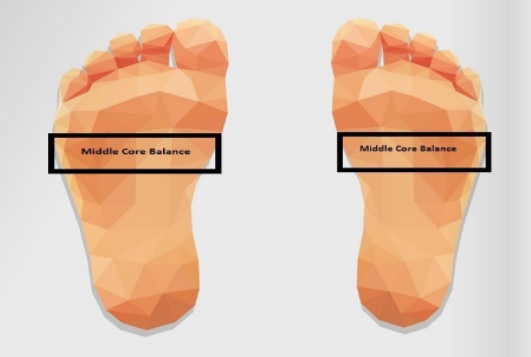
Middle Core PGA Tour Players include Adam Scott, Cameron Champ, Jon Rahm, Jason Day, Ernie Els, Justin Thomas, Collin Morikawa, Brooks Koepka and Hideki Matsuyama. The majority of PGA Tour Winners are Middle Core Players. LPGA Tour players are Middle and Lower Core. Each of these Middle Core Players share a bit of Upper and Lower Core Characteristics.
Wright BALANCE® and SEQUENCING OF MOTION
Now let’s revisit the points of balance in each of these Core Regions. Everything I have described here is related to balance. The Lower Core Player is over the center of their arches and their ball position is center to center back in their stance. Without a club and a ball on the floor center to center back in a wide Stance, set up in a posture so your weight is over the center of your arches. Turn your trail hand so your palm is angled up toward the ceiling at a 45 degree angle. Now turn back to the top of the swing with your weight still over the center of your arches and your trail hand in that “strong” position. Notice that your Center of Mass is over your trail hip side. Now start your downswing with your hips and notice how easily your hips turn through to finish in that center of arches position.
Now let’s go to the balance and set up positions of the Upper Core Player. Set your weight over the balls of your feet, move the ball forward and Narrow your Stance. Now turn your trail hand to a “weaker” position so that your trail palm is angled toward the floor at a 45 degree angle. Now, turn in your backswing starting with your trail hip with your weight over the balls of your feet and your trail hand angled down with a forward ball position. Don’t fight staying on the target side. That is where your Center of Mass is going so let it go. If you “move off” the ball as your first move, you won’t feel that target side Center of Mass. Just rotate around that forward ball position. Remember, the Upper Core Player uses rotational and vertical ground force. You have the rotational force in your backswing and downswing. Let’s find the Vertical Force. Stay on the balls of your feet and start your downswing. Notice how your hips “stall” at impact and you change direction moving upward. There’s your Vertical ground force. Notice how quickly your arms and hands exit just outside your lead foot as they pull your hips through. Also notice the feeling of “Covering” the ball.
Lastly, lets go to the Middle Core Motion. Set your Stance Width wider than your Upper Core Stance Width and narrower than your Lower Core Stance Width. Move your ball center to center-forward in your stance. With a flat palm point the fingers of your trail hand straight ahead so that your trail hand is perpendicular to your body and target line. Set your trail arm elbow on your trail hip with your fingers still pointed straight ahead. This is a “neutral” trail hand grip position. Set your weight just forward of the Center of your Arches and just behind the Balls of your feet.
Now with your fingers pointed straight ahead slowly begin your backswing with your hips, shoulders, arms and hands (all together). You should feel very centered in your backswing over your pelvis. Now turn through to the finish. You will notice a release of your hips that is greater than the Upper Core Swing and less than a Lower Core Swing. You may notice minimal lateral motion back to the ball and a tendency to come up and out of posture. Notice that you are somewhere between the feeling of an Upper and Lower Core impact position. The Middle Core Player uses the ground in all 3 Forces, Linear or Horizontal, Torque or Rotational and Vertical or Launch.
If you are interested in exploring more about Wright Balance® as it applies to your playing or teaching, take a look at the EBook in this link: https://fliphtml5.com/azhq/tazi You will find the history and the brain trust behind the research and several hundred pages of illustrations of Tour Players from Upper, Middle and Lower Core Regions.
To see an overview of Dr. Giombetti's research on Ground Reaction Force, you will find videos of the his research in each of the Core Regions in this EBook.
https://instructions.wrightbalance.com/grip-ground-reaction-force/
If you wish to see one of our professionals, check out our map and find a Certified Wright Balance Professional on the home page of www.wrightbalance.com








